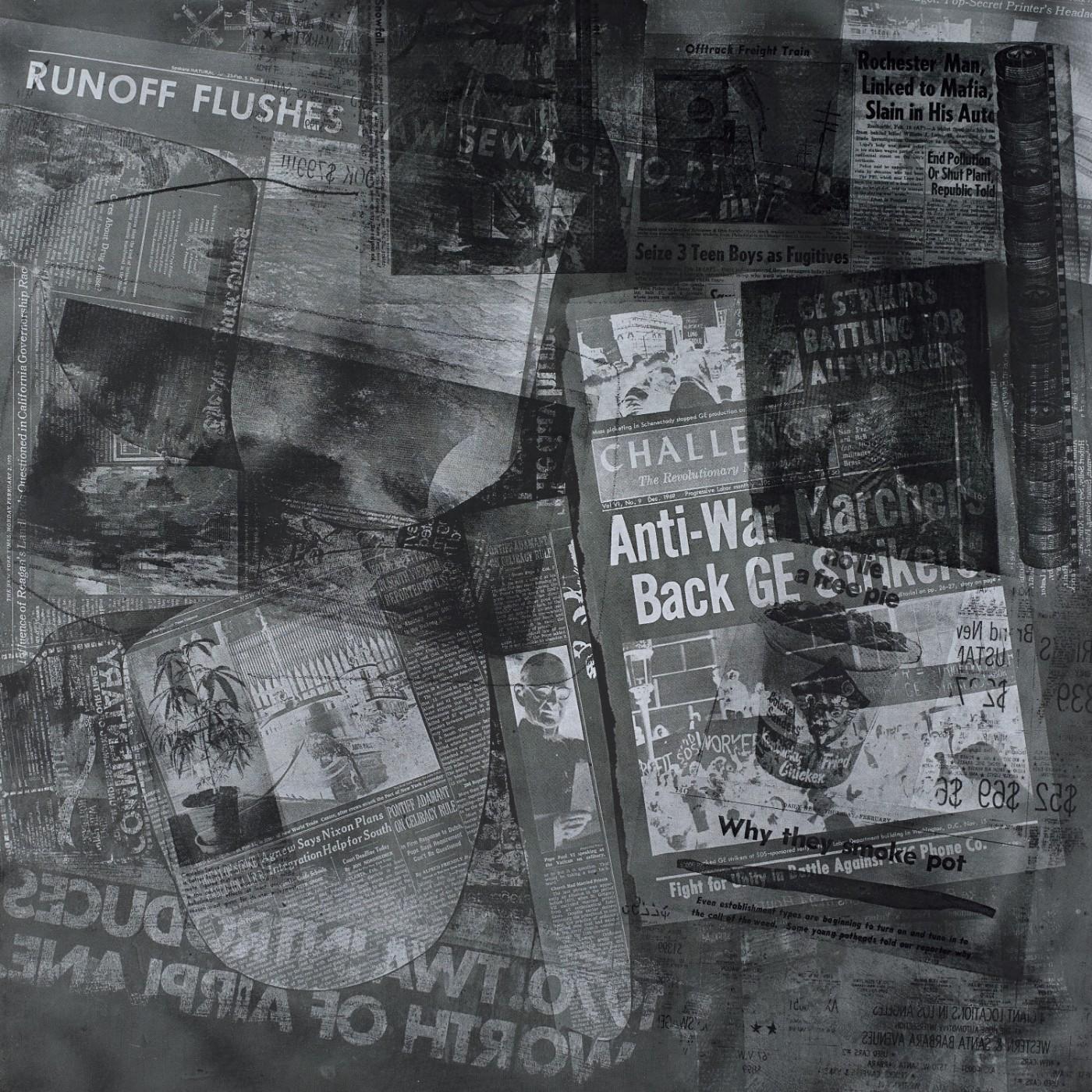“In anticipating the 50th anniversary of this important work, which we do not believe has been installed together since 1970, we are pleased to offer visitors the opportunity to come to grips with Robert Rauschenberg’s inventiveness, his sophisticated creative vision and his incisive reportage,” said James Steward, Nancy A. Nasher–David J. Haemisegger, Class of 1976, director. “Like many of the greatest prints of the modern period, these works combine formal invention with political engagement in a way that demands they be taken both as great works of art and as critical documents of one of the most tempestuous periods in U.S. history.”
Rauschenberg’s innovations as an artist blossomed in the 1960s as he mixed screenprinted images collected from popular media with an eclectic array of found objects, gestural painting and performance art to produce some of the most animated, daring works by any artist of his generation. By the end of the decade, Rauschenberg was internationally famous. At the same time, his work was becoming darker as he became more committed to social activism.
According to Rauschenberg, the Currents projects represented his “active protest attempting to share and communicate my response to and concern with our grave times and place . . . the most serious journalism I had ever attempted.” The title, Currents, refers to both the significant undercurrents of social and political upheaval underway in 1970 and specific contemporary current events.
For the Currents project, Rauschenberg collected stories, headlines, ads and images cut from more than 15 newspapers and tabloids from around the country dating primarily from early 1970. These clippings, combined with drawn, printed and transferred images, were pasted together to make 36 collages that were then photographed. The photographic negatives were enlarged and used in a variety of combinations to create screens for three series of photomontage-screenprints.
In the first, entitled Currents, Rauschenberg created a continuous 54-foot-long by 6-foot-high handprinted silkscreen of the 36 collage studies – one of the largest such prints ever created. To reach a larger audience, Rauschenberg produced Features from Currents, which consisted of 26 of the collage studies printed on individual sheets of paper.
For the 18 screenprints in Surface Series from Currents, Rauschenberg superimposed two different negatives in making each of the screens, resulting in a cacophony of words and images that engulfs the viewer in a cascade of current events. The seemingly accidental patterns that are distinctive in this series are the result of having enlarged the negatives to the point where ben-day dots from the reproduced newspaper photographs become visible.
Rauschenberg said of the series, “The fact that you paid a quarter for your newspaper almost satisfies your conscience: Because you have read your newspaper, you have done your bit. And so you wrap your conscience in your newspaper just like you wrap your garbage ... I made that series [Currents] as realistically as I could, as austerely as possible, in the most direct way I knew how, because, knowing that it was art, people had to take a second look, at least, at the facts they were wrapping their garbage in.”
About the Princeton University Art Museum
With a collecting history that extends back to 1755, the Princeton University Art Museum is one of the leading university art museums in the country, with collections that have grown to include over 100,000 works of art ranging from ancient to contemporary art and spanning the globe.
Committed to advancing Princeton’s teaching and research missions, the Museum also serves as a gateway to the University for visitors from around the world. Intimate in scale yet expansive in scope, the Museum offers a respite from the rush of daily life, a revitalizing experience of extraordinary works of art and an opportunity to delve deeply into the study of art and culture.
The Princeton University Art Museum is located at the heart of the Princeton campus, a short walk from the shops and restaurants of Nassau Street. Admission is free. Museum hours are Tuesday, Wednesday, Friday and Saturday 10 a.m. to 5 p.m.; Thursday 10 a.m. to 9 p.m.; and Sunday 12 p.m. to 5 p.m. The Museum is closed Mondays and major holidays.
























![DEl Kathryn Barton [Australian b. 1972] the more than human love , 2025 Acrylic on French linen 78 3/4 x 137 3/4 inches 200 x 350 cm Framed dimensions: 79 7/8 x 139 inches 203 x 353 cm](/sites/default/files/styles/image_5_column/public/ab15211bartonthe-more-human-lovelg.jpg?itok=wW_Qrve3)



